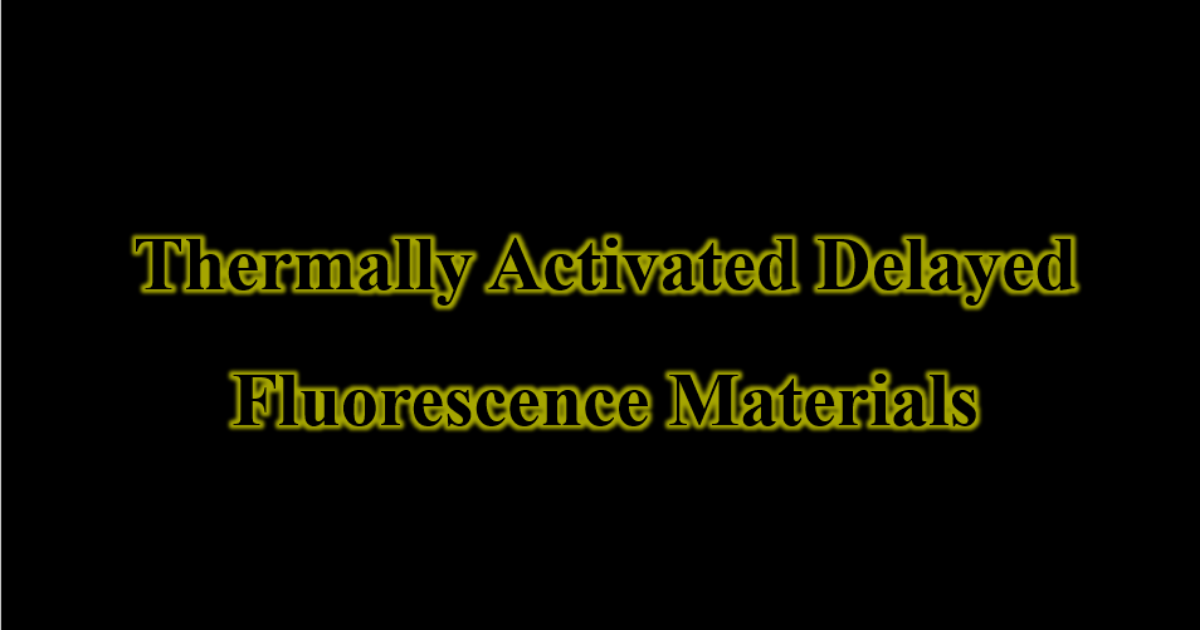Current Updates regarding Thermally Activated Delayed Fluorescence Materials
A special issue of Applied Sciences (ISSN 2076-3417). This special issue belongs to the section "Materials Science and Engineering".
Deadline for manuscript submissions: closed (30 October 2023) | Viewed by 263

Special Issue Editor
Special Issue Information
Dear Colleagues,
This Special Issue focuses on the development of novel thermally activated delayed fluorescence (TADF) materials, including their synthesis, theory, design and applications. All kinds of TADF materials, including organic and inorganic molecules, polymers, complexes, and so on, with excellent performance will be covered by this Special Issue. The developments of TADF materials are beneficial to enhance the performance of organic light-emitting diodes. The goals of this Special Issue are to:
- Develop different kinds of TADF materials by using different methods.
- Explore theoretical mechanisms of TADF materials.
- Provide a deep understanding of the photophysical properties and develop a theoretical design strategy to achieve new TADF materials.
- Accelerate the expansion of the application fields of TADF materials.
Researchers are encouraged to submit their latest findings and results as full-length articles or reviews. Targeted topics include, but are not limited to, the design and synthesis of new TADF materials, their theoretical mechanisms, design strategies, and/or their application fields.
Dr. Lijuan Wang
Guest Editor
Manuscript Submission Information
Manuscripts should be submitted online at www.mdpi.com by registering and logging in to this website. Once you are registered, click here to go to the submission form. Manuscripts can be submitted until the deadline. All submissions that pass pre-check are peer-reviewed. Accepted papers will be published continuously in the journal (as soon as accepted) and will be listed together on the special issue website. Research articles, review articles as well as short communications are invited. For planned papers, a title and short abstract (about 100 words) can be sent to the Editorial Office for announcement on this website.
Submitted manuscripts should not have been published previously, nor be under consideration for publication elsewhere (except conference proceedings papers). All manuscripts are thoroughly refereed through a single-blind peer-review process. A guide for authors and other relevant information for submission of manuscripts is available on the Instructions for Authors page. Applied Sciences is an international peer-reviewed open access semimonthly journal published by MDPI.
Please visit the Instructions for Authors page before submitting a manuscript. The Article Processing Charge (APC) for publication in this open access journal is 2400 CHF (Swiss Francs). Submitted papers should be well formatted and use good English. Authors may use MDPI's English editing service prior to publication or during author revisions.
Keywords
- thermally activated delayed fluorescence (TADF)
- theoretical mechanisms
- design strategy
- application fields
- organic light emitting diodes
Benefits of Publishing in a Special Issue
- Ease of navigation: Grouping papers by topic helps scholars navigate broad scope journals more efficiently.
- Greater discoverability: Special Issues support the reach and impact of scientific research. Articles in Special Issues are more discoverable and cited more frequently.
- Expansion of research network: Special Issues facilitate connections among authors, fostering scientific collaborations.
- External promotion: Articles in Special Issues are often promoted through the journal's social media, increasing their visibility.
- e-Book format: Special Issues with more than 10 articles can be published as dedicated e-books, ensuring wide and rapid dissemination.
Further information on MDPI's Special Issue policies can be found here.





